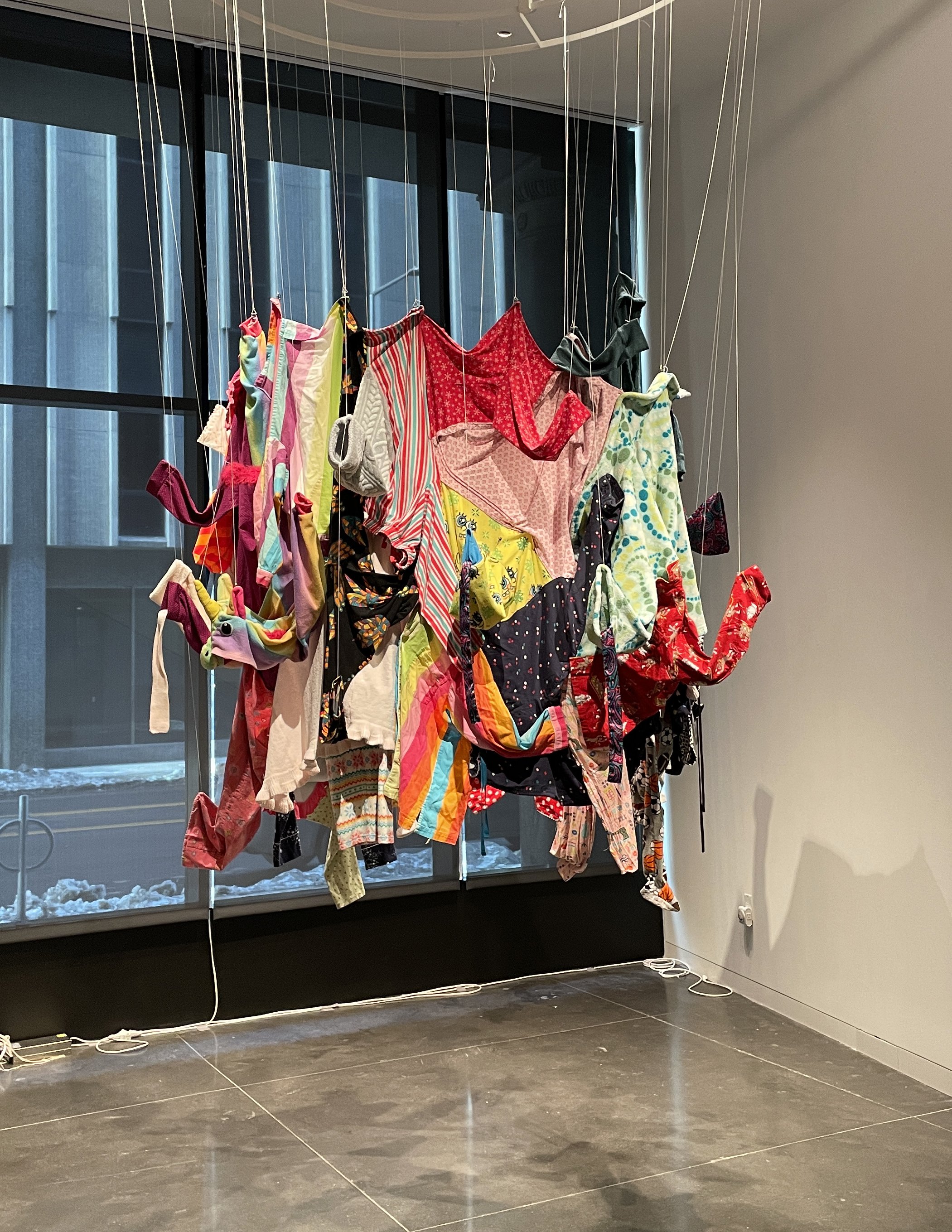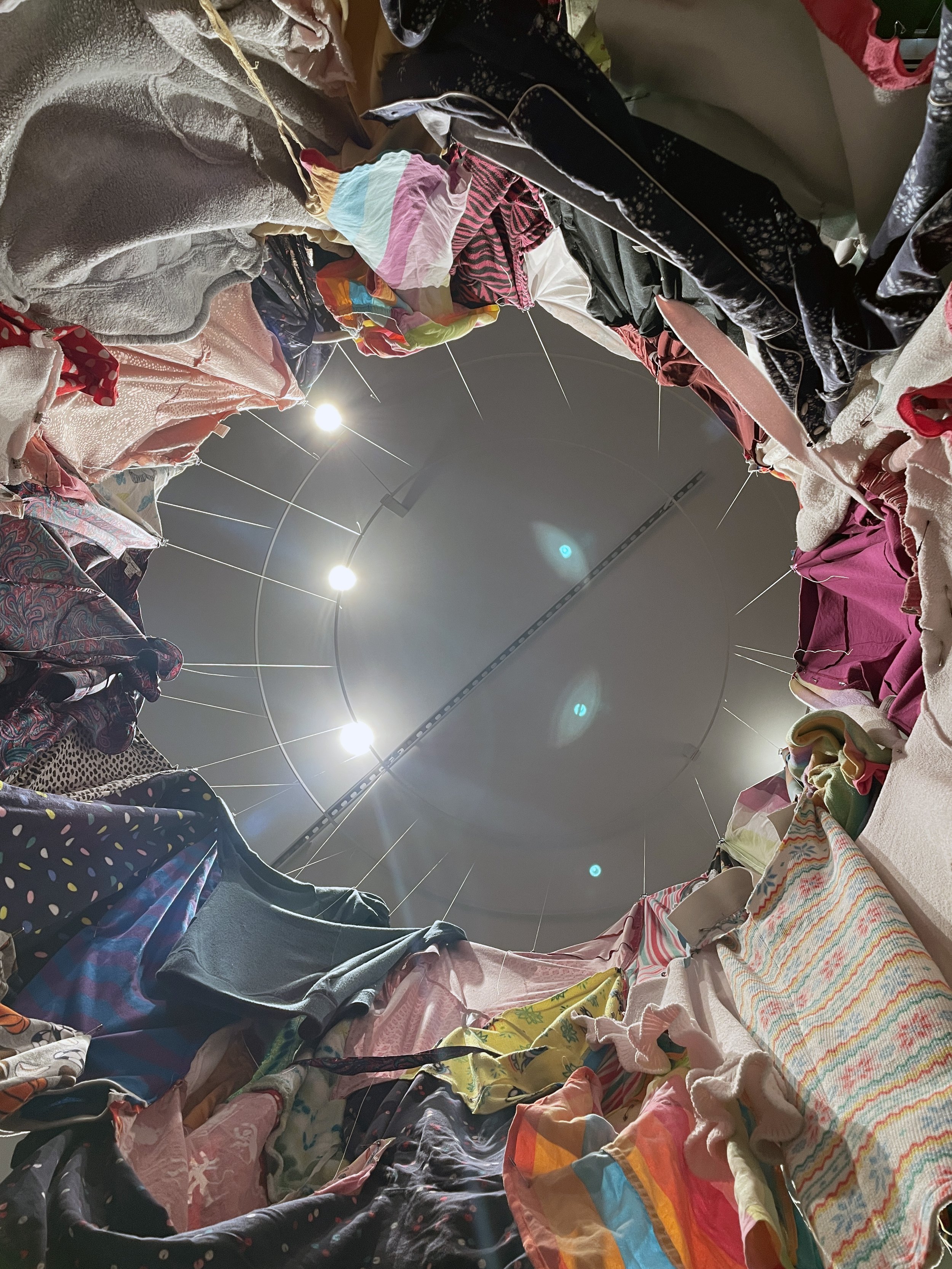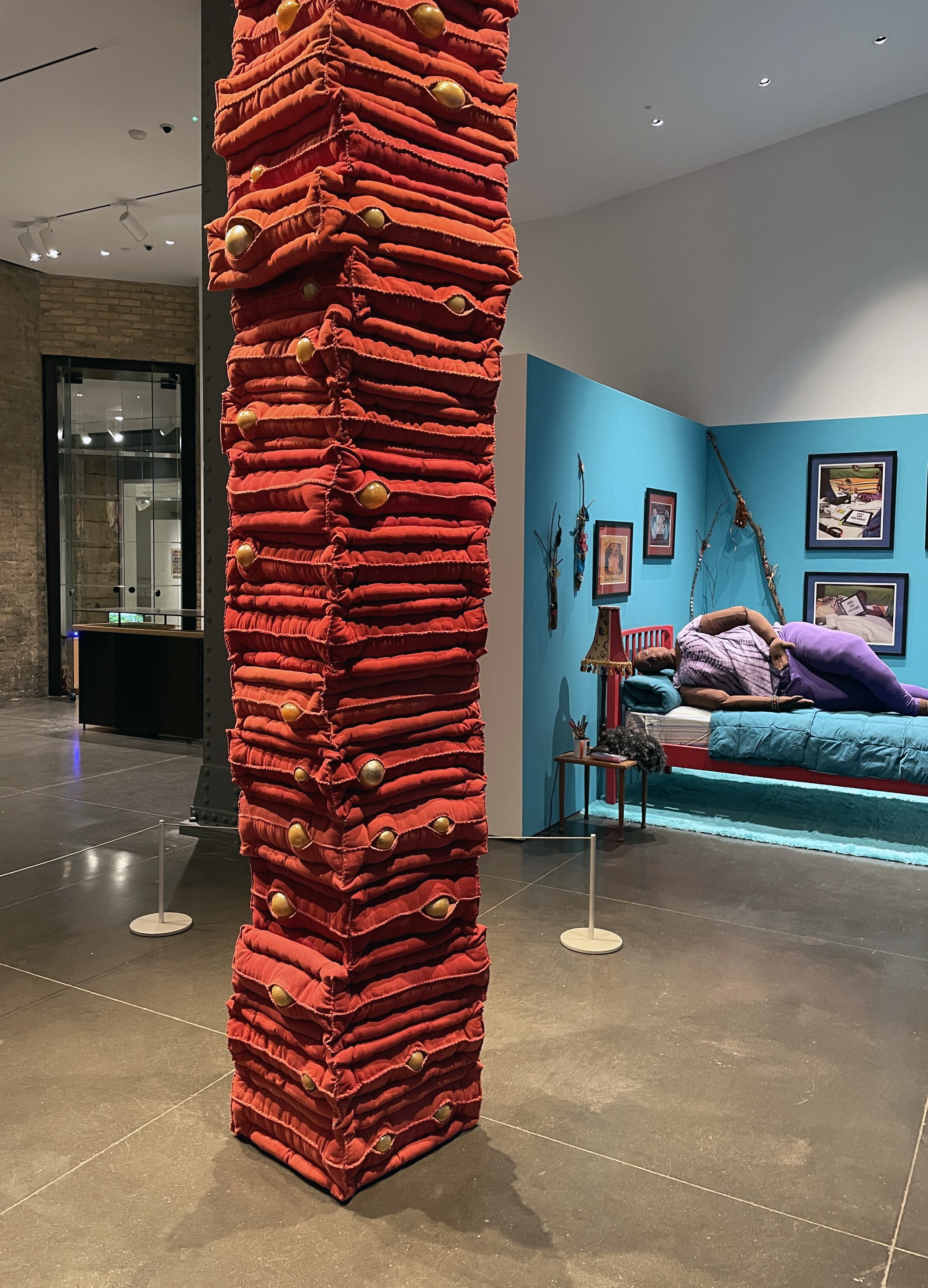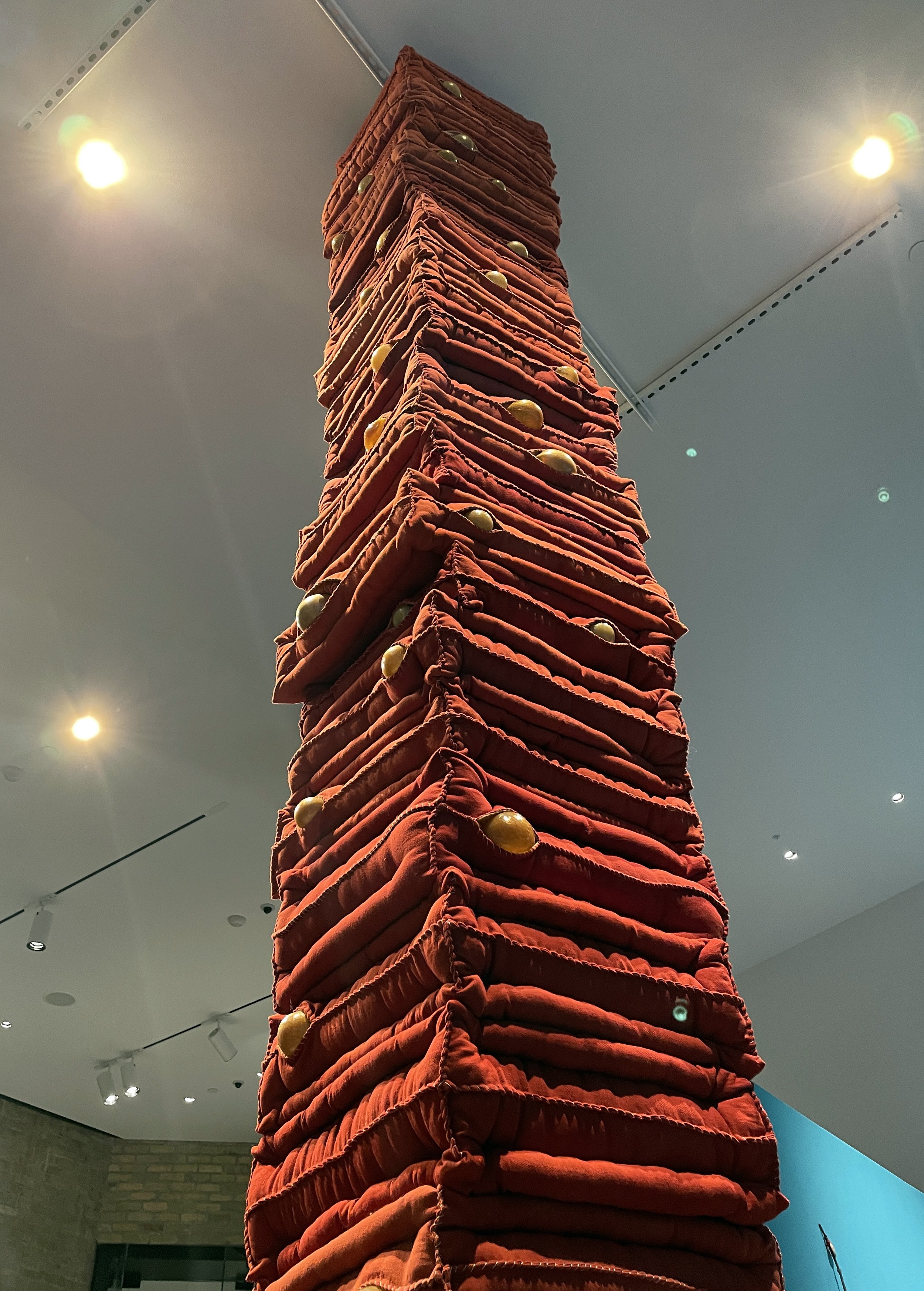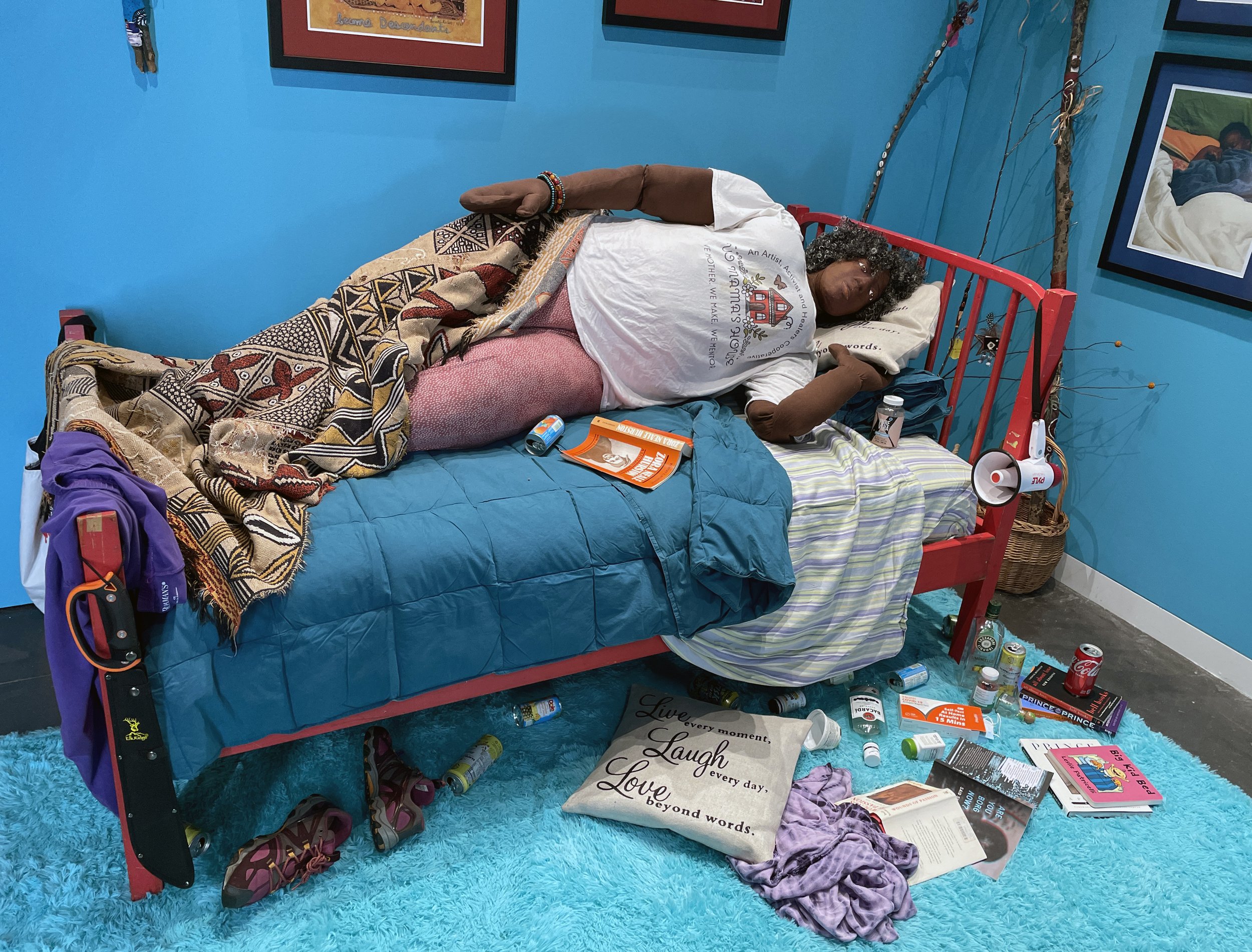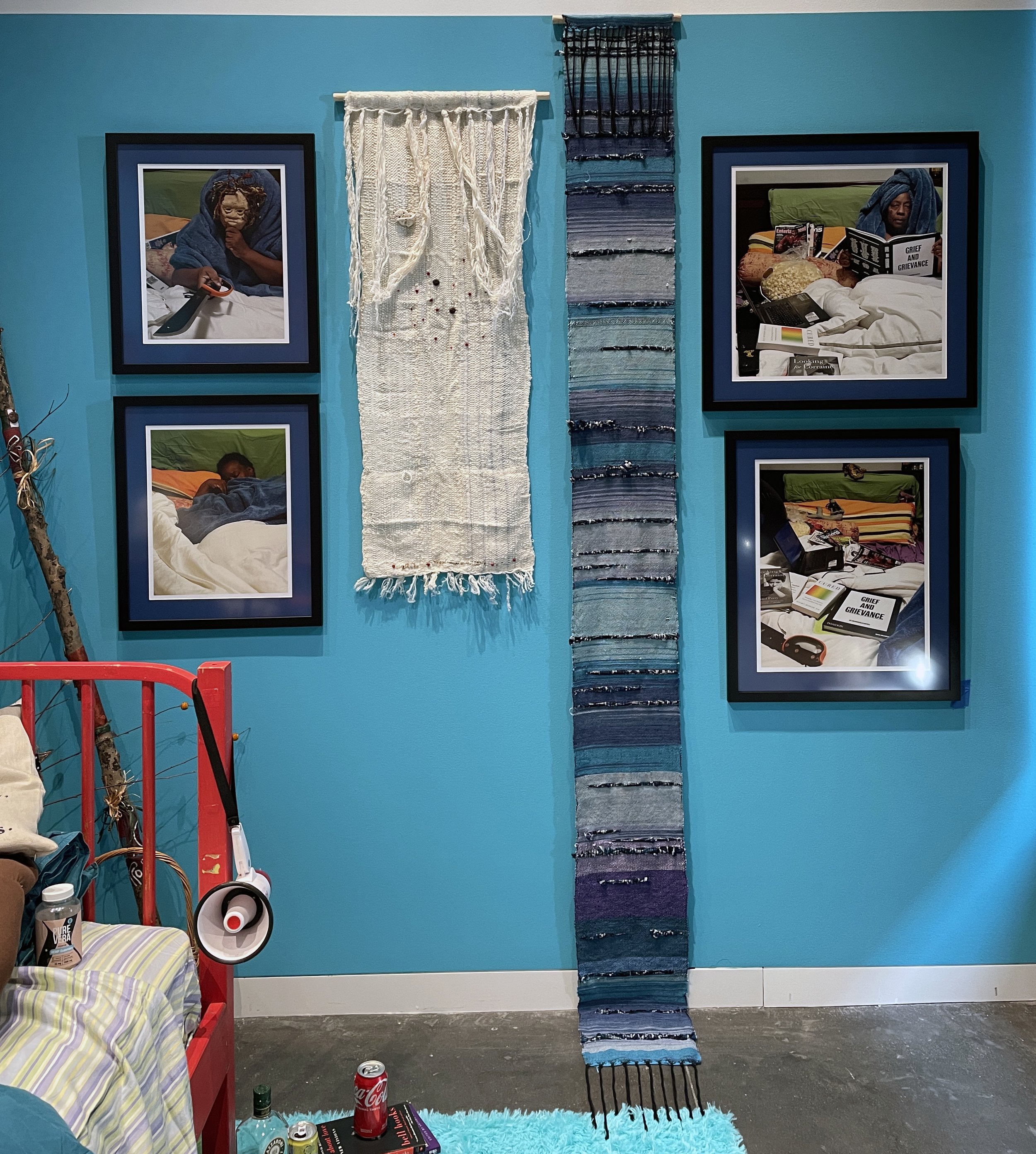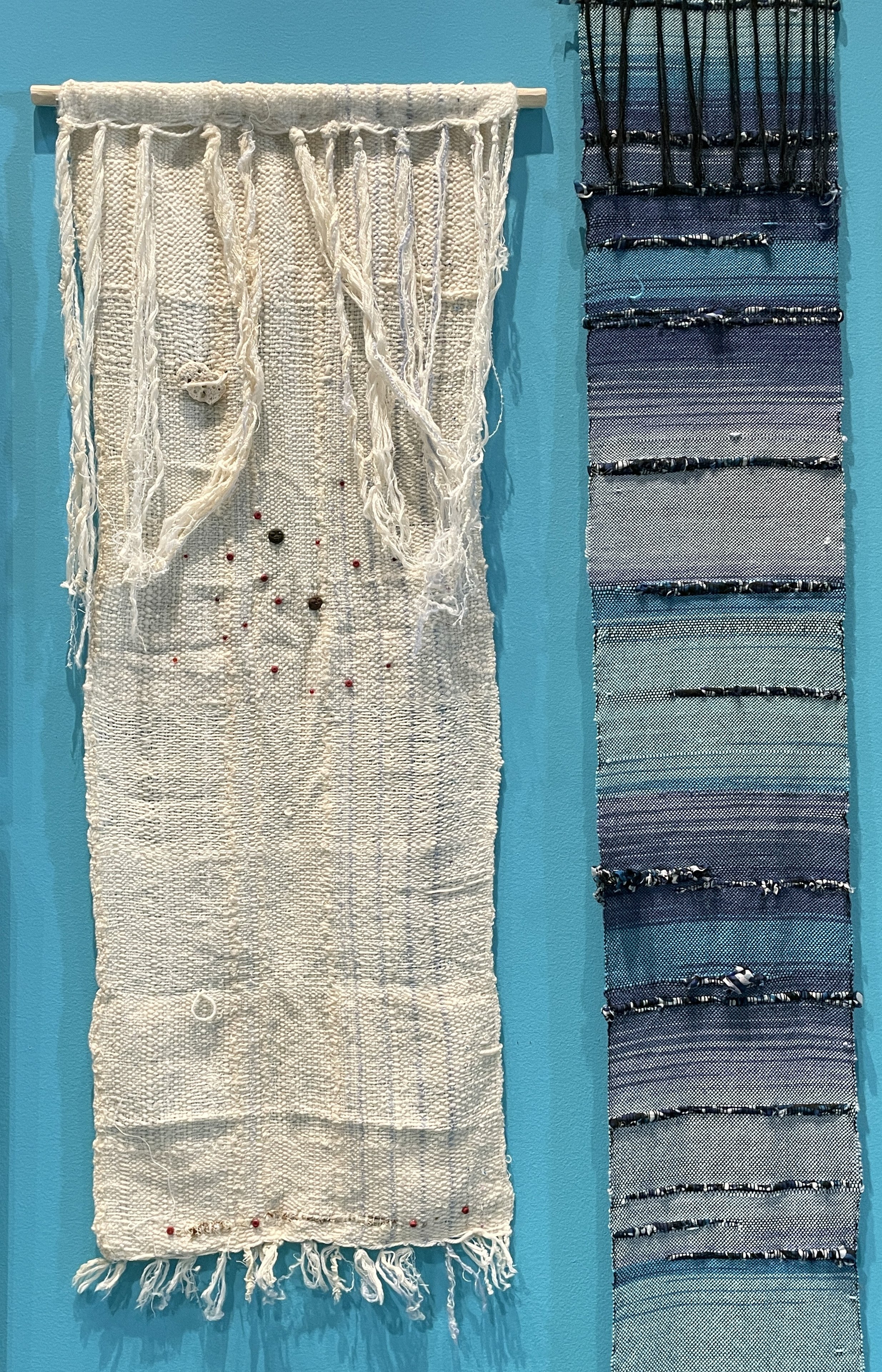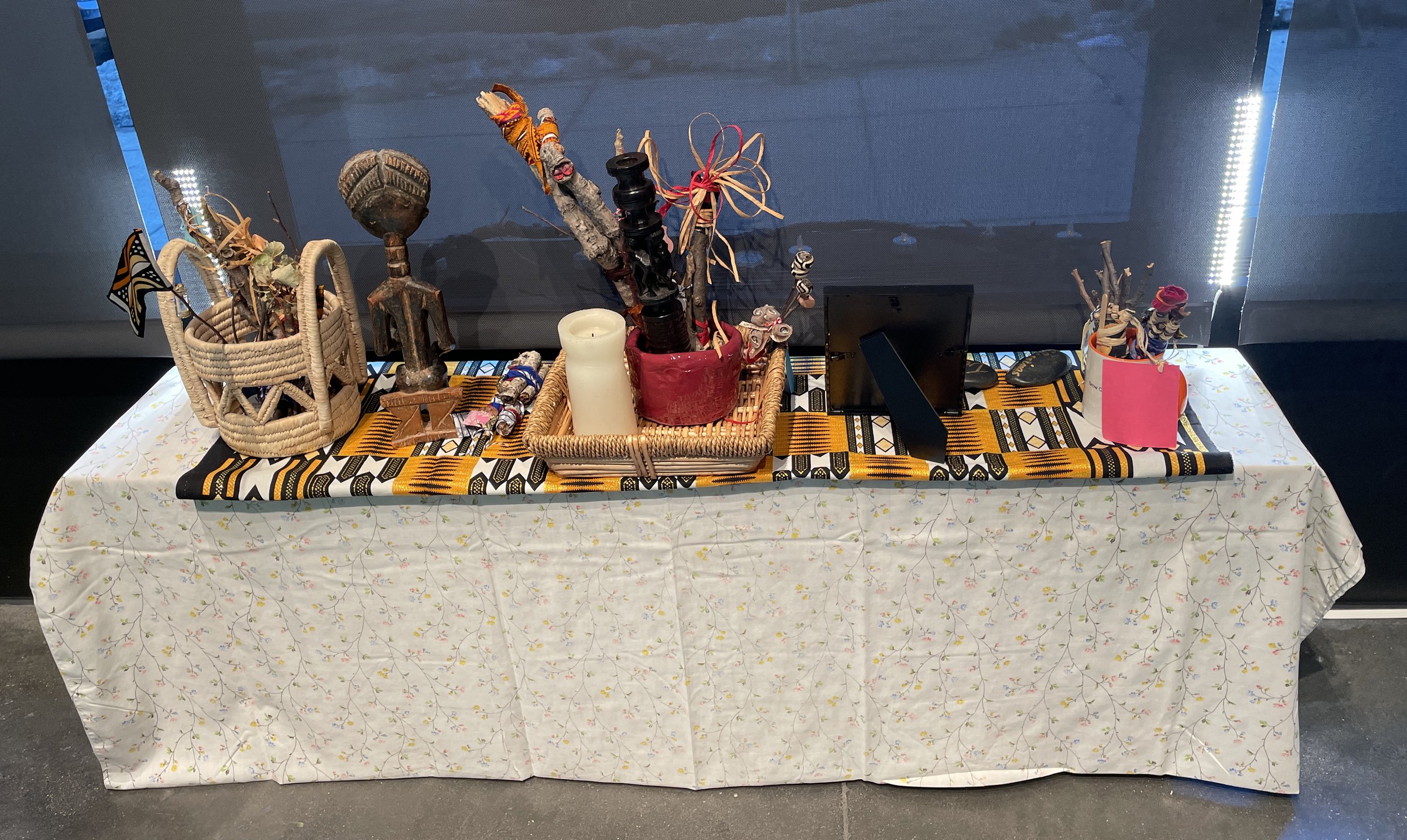Im/perfect Slumbers
“Im/perfect Slumbers”
Exhibition and art residency at the Minnesota Museum of American Art, St Paul, 2022-23
Guest curated by Katya Oicherman in collaboration with Curator of Exhibitions Laura Joseph
How did you sleep last night?
Sleep and its material cultures, textiles, furniture, everyday practices, domestic and industrial labor, habits and behaviors we develop in bed are all very diverse, yet the very necessity of sleep is shared by all human beings. Familiar and accessible everyday objects and practices of sleep and being in bed serve as a “discursive field,” a conversation opener to address the multitude of complex social, political, and psychological phenomena.
In a series of window installations and events at the Minnesota Museum of American Art (the M), this project addresses sleep, in all of its physiological, psychological, social, and political complexity. Human cultures and behaviors of sleep differ, yet the very necessity of sleep is shared by all people. Everyday objects and practices of sleep and being in bed are a window into this shared necessity.
The project features diverse voices of local artists, poets, and cultural activists reflecting on sleep in the contexts of personal memory and recent experiences of the pandemic, ecological crisis, and political upheaval. Through the soft aesthetics of textiles and associative imagery of dreams, Rachel Breen, Sayge Carroll, Amoke Kubat, Shanai Matteson, Katya Oicherman, Molly Parker Stuart, Anat Spiegel, Rotem Tamir, Yuko Taniguchi, Gwen Westerman, and Peng Wu reflect on health, gender, home, labor, and race, enlivening the significance and beauty of sleep while envisioning alternatives to the frenzied rallies of modern productivity.
All the artworks in the series are special commissions. Some are based on the history of the M’s Pioneer building as the home of the first local newspaper, the Minnesota Pioneer, bringing to life the imperfect slumbers of Minnesotans from one hundred and seventy years ago.
Thanks to Peng Wu, who designed the decorative artwork seen through the exhibition.
“...to be cut short of his imperfect slumbers by dread…”
It is a fragment of a short article that appeared in the Minnesota Pioneer newspaper from June 28th 1849. The newspaper, housed in the very same building that now houses the M, had just begun its operation that year and is credited to be the first newspaper published in the New Minnesota Territory. Its first editor, James Madison Goodhue, was probably the author of the article in question, a response to a letter from a certain Titus A. Peep. Mr Peep describes the worries of his elderly neighbor, one Mrs Smelletts, who cannot sleep at night because there is a man outside who is making strange noises and is evidently sleeping rough. The editor investigates and replies to his correspondent with a minute description of Mrs Smelletts lodgings, very satisfactory to his view, and a eulogy to homeless sleep of a person who recently arrived to the city-under-construction and could not find a place to lodge. Rather than reassuring Mrs Smelletts that no harm will come to her, her family and their possessions, the editor urges her to empathize with the homeless man, appealing to her better nature and understanding what this means to be a newcomer in a new place.
The letter and the response are most probably a jocking sham, as the name of Titus A. Peep suggests, being a New England colloquial for a drunken person. Still, while openly comical in both language and content, is a condensed document of Minnesota sleep in the 1850s, testifying to material and mental conditions of sleeping inside and outside, when the very idea of having a bed and a roof are not taken for granted. The prejudices and fears of the white settlers are creeping in as half-expressed presumptions about the Native peoples who are compared to the menacing mosquitoes and the mildly disdainful and overly patronizing view of women and their “obviously” exaggerated concerns. Beds and nightmares, real histories and imagined phantasms, low and high rhetoric correspond in those dense lines, forming a microcosm we can observe with a feeling of embarrassed astonishment, a strange deja vu, too familiar to be dismissed and too fantastic to be absorbed. The right-angle streets and avenues of the elegant downtown of St Paul around the M’s building are mostly frequented by homeless people, the majority of whom are people of color and mentally ill. One hundred and seventy years later ours are still imperfect slumbers. Given the current state of the world with raging wars, global political instability, growing inequality and looming ecological disaster, peaceful sleep seems to further recede into the horizon of desire.
Visit the M website and read about each work here

